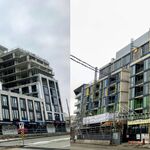Toronto's freeway network is small compared to other cities in North America around it's size.
This means that what it does have needs to be efficient as it can be. Adding an extra through lane or two on 404/DVP at 401 would help get more people through the interchange. Lanes would then taper off on DVP either exiting at interchanges or simply ending.
Would these new lanes instantly fill up when complete? Of course! If you build it, they will come, and Toronto is growing at a pretty good pace. Having this extra capacity immediately utilized to its max means it's benefit will be an instant boost to the area.
If you only have minimal money to help combat congestion, work on bottlenecks such as this. Makes the whole system faster.




